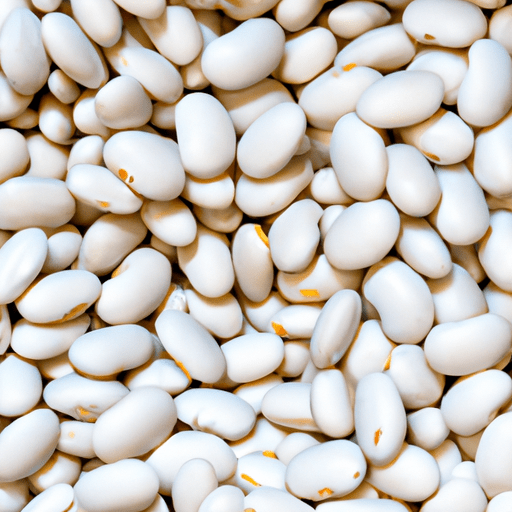All About Dried White Beans: A Culinary Powerhouse
Dried white beans are a staple ingredient found in kitchens around the world. This humble legume, packed with flavor and nutrition, has earned its place as a culinary powerhouse. In this blog post, we will explore the taste, common uses, nutritional value, and fascinating history of dried white beans.
Taste:
Dried white beans possess a mild and nutty flavor that makes them incredibly versatile in cooking. When properly cooked, they have a velvety texture that adds depth to a wide range of dishes. Their delicate taste allows them to absorb and enhance the flavors of other ingredients, making them an ideal base for various culinary creations.
Common Uses in Cooking:
Dried white beans are beloved by home cooks and chefs alike for their versatility. Let’s explore some common ways to incorporate these amazing legumes into your culinary repertoire:
Soups and Stews: Dried white beans shine in comforting soups and stews. Whether it’s the classic Tuscan white bean soup or a hearty vegetable stew, their creamy texture and ability to thicken broths make them indispensable.
Salads: From light summer salads to hearty grain-based concoctions, dried white beans bring a substantial protein boost. Their mild taste allows them to mingle harmoniously with various vegetables, herbs, and dressings.
Dips and Spreads: Think beyond hummus! Mashed white beans can be transformed into creamy, protein-packed spreads that are perfect for sandwiches, wraps, or as a dip with crudités.
Casseroles and Baked Dishes: White beans add depth and creaminess to casseroles and baked dishes, such as vegetarian lasagna or gratins. They bring a satisfying heartiness without overwhelming the dish.
Sides and Accompaniments: White beans make a fantastic side dish on their own or alongside grilled meat, roasted vegetables, or fish. Simply seasoned and cooked, they provide a healthy and flavorful addition to any plate.
Nutritional Value:
Dried white beans are a nutritional powerhouse, offering an array of health benefits. These legumes are:
- High in fiber: White beans are an excellent source of dietary fiber, promoting digestive health and aiding weight management.
- Packed with protein: They are a valuable plant-based source of protein, making them a great option for vegetarians and vegans.
- Rich in vitamins and minerals: Dried white beans provide essential nutrients such as folate, iron, potassium, and magnesium, contributing to overall well-being.
- Low in fat and calories: With their low-fat and low-calorie content, white beans offer a nutritious and satisfying addition to any diet.
History and Interesting Facts:
White beans have a rich history dating back thousands of years. Here are a few interesting facts:
- Dried white beans are native to the Americas and were cultivated by Native American tribes. They played a vital role in their cuisine.
- Great Northern beans, Navy beans, Cannellini beans, and Lima beans are all different types of white beans, each with their own unique characteristics.
- The term “white beans” collectively encompasses various bean varieties, differing in size, shape, and flavor. Each variety has its own distinct culinary uses.
Whether you’re looking to increase your protein intake, explore new recipes, or simply enjoy their delicious taste, dried white beans are an ideal addition to your culinary adventures. Their versatility, nutritional value, and rich history make them a pantry staple that every home cook should embrace.
So, let your imagination soar and unlock the true potential of dried white beans in your cooking repertoire. From comforting soups to hearty casseroles and everything in between, these humble legumes are sure to delight your taste buds and nourish your body.
Do you have any favorite dried white bean recipes? Share your thoughts and ideas in the comments below!
Dried White Beans
Origin and Variety: Dried white beans, also known as navy beans, are native to the Americas and have been cultivated for thousands of years. They were named “navy beans” due to their longstanding use as a staple food in the United States Navy.
Variety: There are several varieties of dried white beans, including Great Northern, Cannellini, and Navy beans. These variations differ slightly in size and flavor, but can generally be used interchangeably in recipes.
Common Uses: Dried white beans are widely used in various cuisines around the world. They are often used in soups, stews, and casseroles, as well as in dishes like baked beans and hummus. In Mediterranean and Italian cuisines, Cannellini beans are a popular choice, commonly found in salads and pasta dishes.
Nutritional Benefits: Dried white beans are a nutritious ingredient. They are a good source of protein, dietary fiber, and complex carbohydrates. They are also rich in minerals such as iron, magnesium, and folate. Consuming white beans can contribute to a healthy diet and provide essential nutrients.
Unique Properties: Dried white beans have unique properties that make them valuable in the culinary world. When cooked, they have a creamy texture and a mild, slightly nutty flavor. They are also known for their ability to absorb flavors from other ingredients, making them ideal for soups and stews.
Historical Significance: Dried white beans have historical significance as a staple food. They have been a dietary staple for many cultures throughout history due to their availability, extended shelf life, and nutritional value. From ancient civilizations to modern times, dried white beans have played a role in diverse cuisines worldwide.




Use the share button below if you liked it.
It makes me smile, when I see it.